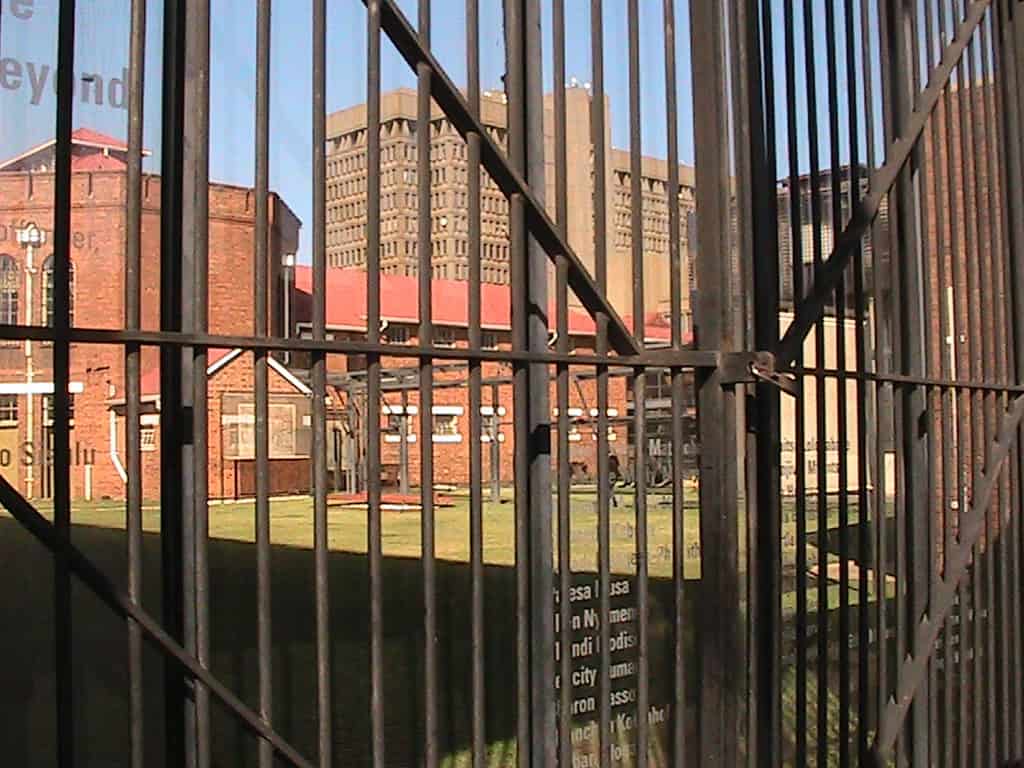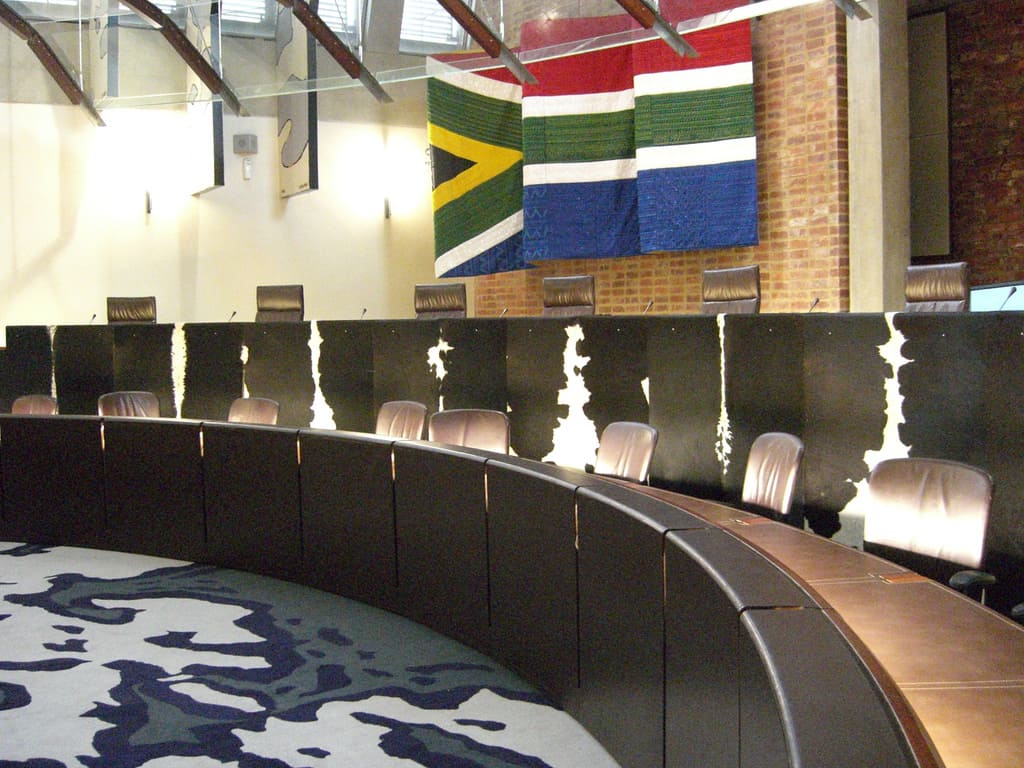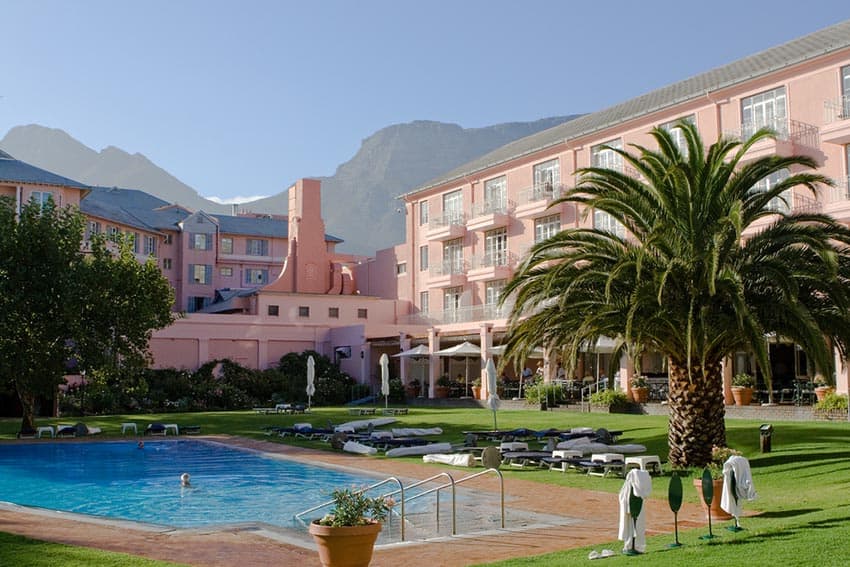
Constitution Hill: The Infamous former prison transformed into a living museum
By Kayla McMillan
Constitution Hill, the site of a former prison and military fort in South Africa, is a living museum that tells the story of the country’s journey to democracy.
The site bears testament to South Africa’s stormy past and, today is home to the country’s Constitutional Court.
This prison jailed a number of infamous men and women inside the walls of Constitution Hill’s Old Fort, Women’s Jail and Number Four. Those individuals include Nelson Mandela, Mahatma Gandhi, Joe Slovo, Albertina Sisulu, Winnie Madikizela-Mandela, Fatima Meer, and more.

These incredibly notorious individuals all served time here. During its 100-year history, tens of thousands of ordinary people also served time here: men and women of all races, creeds, ages, and political agendas; even children.
It’s clear that much of South Africa’s history lives here in Constitution Hill.
A Place of Contrasts
As stated by the members of Constitution Hill, this is a place of contrasts: “of injustice and justice, of oppression and liberation.” This historic place is a testament to the importance of preserving sites of atrocity for posterity while recreating them so that they teach those in the present while serving a mold for the future.
Constitution Hill offers daily tours of the precinct and additionally conducts public events. This allows visitors from near and far to interact with the space.
There is also a variety of venues on the site available to suit any event from small private functions to large corporate conferences.
Read the Graffiti
Take some time to explore the historic museum. Touch the textured walls, read the graffiti of those who resided here before, hear the echoes through the halls, stride up the Great African Steps, stand in the highest court of the land, and learn what constitutionalism means in South Africa.
Situated in the heart of Johannesburg, Constitution Hill will provide visitors with the story of South Africa’s transition from colonialism and apartheid to democracy.
Constitution Hill is open daily from 9 am to 5 pm, with the final tour departing from the Visitor Center at 4 pm.
Constitution Hill’s Tours
Constitution Hill offers a variety of different tours. Read about the different options and decide which one suits your visit the best.

The Highlights Tour is an hour-long tour that alternates each hour. One hour the tour visits the Women’s Jail, Number Four, the Constitutional Court.
The next visits the Old Fort, Number Four, and the Constitutional Court. This tour is useful for those who have a limited time they’d like to visit the area.
After the tour, visitors are welcome to explore the rest of the precinct on their own.
The Full Tour lasts two hours long while visiting the Old Fort, Women’s Jail, Number Four, and the Constitutional Court.
This holistic tour explores the precinct’s complex history, its mutations through time, the humiliations and injustices of the inmates, and offers an explanation as to why the court’s presence is so meaningful.
The Full Tour departs from the Visitors Center twice a day, at 10 am and 1 pm.
Interestingly enough, Constitution Hill offers Night Tours to explore the deep space, filled with the echoes of the many individuals who were incarcerated within its walls during its 100-year history.
The Night Tour creates a different space altogether by offering a chance to explore Constitution Hill underneath the night sky, giving a sense to what prisoners might have experienced during their long nights of confinement.
The tour begins at sundown on the Old Fort and ends with dinner at The Hill restaurant. These tours take place on the last Thursday of every month.
Put on Your Prison Uniform

The Time Travel Tour provides visitors with prisoner uniforms and officially registers them as prisoners.
With a qualified historical guide, this tour offers a sense of what the precinct was like when it was an operational facility.
Men and women are separated and marched through the prison by their warden-come-guides, who ensure that they will undertake tasks specific to the male and female prisoners.
At the end of the tour, the two groups with come together for a tour of the Constitutional Court.
This experiential tour is inspired by the events around the arrest of the youth on June 16, 1976, a time of heightened political tension across South Africa.
The Time Travel Tour includes lunch at The Hill restaurant and takes place on the last Friday of every month.

Nelson Mandela, once known by his clan name, Madiba, was incarcerated at Constitution Hill on two occasions.
Mandela visited the prison on several other occasions including his professional capacity as a lawyer to a number of people, including his then-wife Winnie Madikizela-Mandela. A permanent exhibition has been established in his honor at Constitution Hill.
The Madiba Tour traces the steps of Mandela around the precinct, starting at the Flame of Democracy, which Mandela lit from his home in Qunu to mark the 15th anniversary of the Constitution in 2011.
It then proceeds to Winnie Madikizela-Mandela’s cell at the Women’s Jail, Mandela’s cell at the Old Fort, and ends at the Constitutional Court.
Mandela was the only black prisoner to be imprisoned in the while male section of the prison to keep him from influencing other black prisoners.
The Constitutional Court Trust owns an extraordinary collection of artworks donated by prominent artists and other benefactors to celebrate the court’s role in South Africa’s transition to democracy.
The Art and Justice Tour covers the collection assembled by Justice Albie Sachs, who practiced as a judge at the Constitutional Court from 1994 to 2009.
This tour includes a unique collection of South African and international heritage that contributes to education, debate, and research on the roles of the Constitution and the court, This tour can be booked any day of the week for groups of 10 or more people.
In addition, there is a free Art and Justice Tour on the last Thursday of every month. The tour begins at 6 pm at the main entrance to the court and lasts approximately an hour and a half.
The Constitutional Court Tour begins with the story behind the now demolished Awaiting Trial Block, the bricks of which were used to build the court, before moving into the court foyer and finally into the court chamber itself. South Africa’s Constitutional Court, the highest court in the land, is a building rich in symbolism.
The Constitutional Court Tour is conducted by a court expert, who discusses the importance of the court in South Africa’s constitutional dispensation and the significance of the building’s architecture and artworks.

Eating on the Hill
Constitution Hill offers dining options from formal business lunches to a casual lunch with family and friends.
The Hill
Visit The Hill for a refreshment or bite to eat at the full-service cafe, restaurant, and bar that allows you to take in your surroundings as you pick your meal. Located in the Old Fort parade ground, The Hill offers an innovative a la carte menu with items made from locally sourced and seasonal produce. The Hill is open weekdays from 9 am to 5 pm.
The History of Constitution Hill
Constitution Hill is almost as old as the city it resides in: Johannesburg. As years went on, the prisons at Constitution Hill became established sites of incarceration, along with issues of overcrowding, poor sanitation, and disease. In 1948, these problems rose as racial issues became evident under the Nationalist government and the growing number of people arrested were for both petty and severe apartheid laws.

The number of incarcerated individuals continued to escalate into the 1950s and 1960s; a total of 156 people, including Nelson Mandela and Oliver Tambo, were arrested and held at the prison before the historic Treason Trial in 1956.
Two years later, 2,000 women were detained after protesting the pass laws. The Anti-Pass Campaign of 1960 brought additional prisoners, as well as many young individuals under the age of 18 due to the uprisings of 1976.
On January 31, 1983, the prison doors to the Old Fort and Number Four were officially closed.
Site Abandoned
Any inmates at the time were transferred to the new Diepkloof prison while the precinct was leased to the Prisons Department with the intention of transforming it into a prison services monument.
Unfortunately, this never happened and the site was abandoned. As it deteriorated, items of value were removed by vandals and sold on the city’s streets.
It wasn’t until 1990 that conversations began about turning the site into a tourist attraction. Other ideas were also discussed: demolishing the precinct and building hotels, theatres, restaurants, and community facilities instead.
Fortunately, these ideas were overtaken by the more important motive: creating an educational museum out of the once-prison.
This took several years to construct due to the large idea that was in mind. The South Africa Constitutional Court planned the design to link up with the area’s surrounding streets, making the site accessible to the public while integrating it into the inner city.
It wasn’t until Human Rights Day on March 31, 2004, that the Constitutional Court was inaugurated. The following day, the exhibition spaces and visitor experience was finalized, and Constitution Hill was opened to educate the public while honoring South Africa’s heritage.
To find out more about tours and exploring Constitution Hill, visit constitutionhill.org.za.
- Discover Cambodia: Lavender Jeep Style - May 22, 2019
- Inside the Prison that Once Jailed Nelson Mandela - May 17, 2019
- Jeju Island Korea: the Beautiful Island of the Gods - May 14, 2019



Thank you Kayla for a very informative and well written article. I believe most of us have heard of the prison on Robbin’s Island off of Cape Town but not many of us knew about this prison in Johannesburg. I have never been to South Africa but should I ever be fortunate enough to make the trip I will add Constitution Hill to my itinerary.